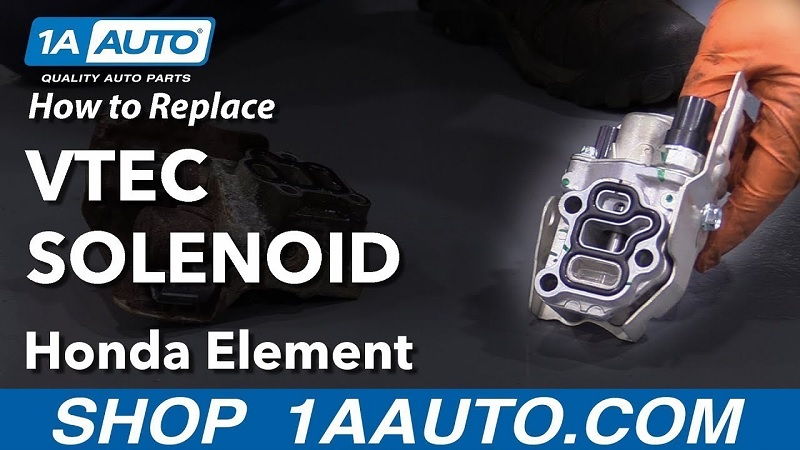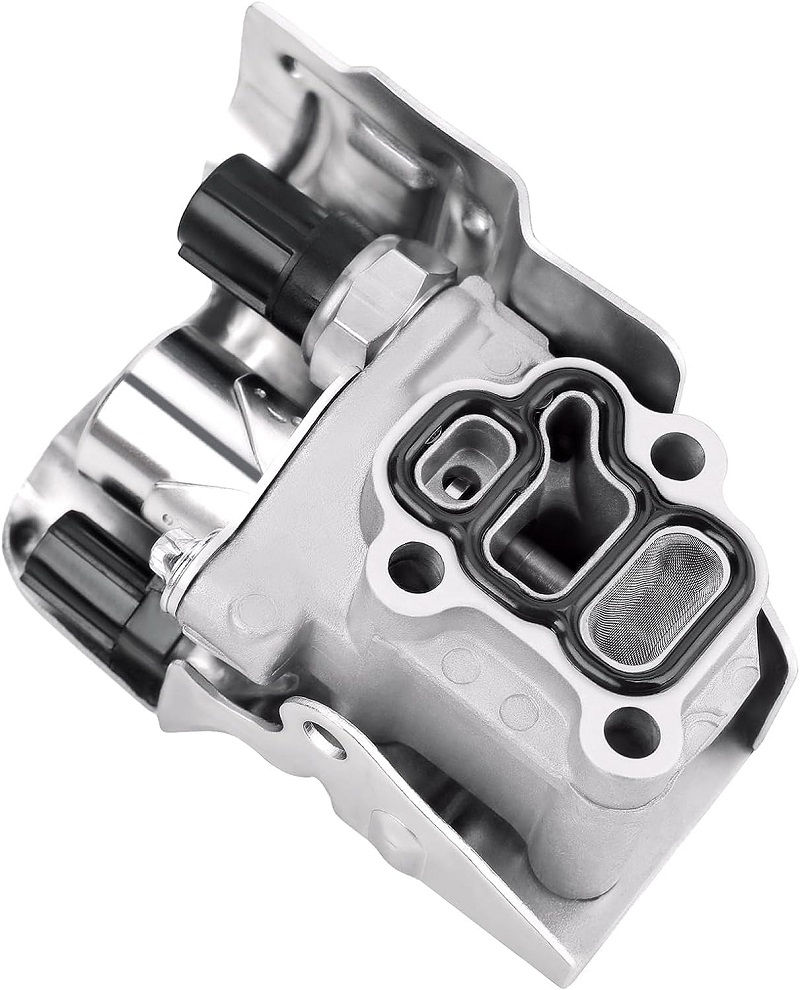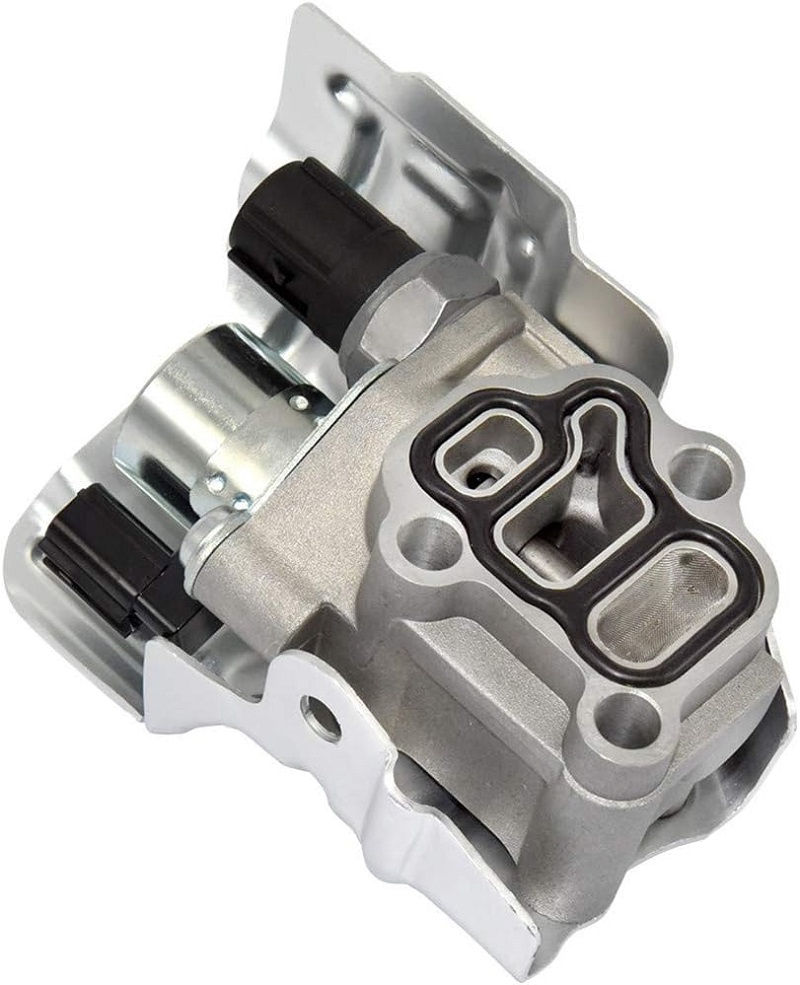This post contains affiliate links. This means I will make a commission at no extra cost to you should you click through and make a purchase [ “As an Amazon Associate, I earn from qualifying purchases.” ]. Read the full disclosure here.
Honda Element VTEC Solenoid GuideMechanic.Com When it comes to Honda vehicles, the Element holds a special place in the hearts of many enthusiasts.
This unique and versatile crossover combines the functionality of an SUV with the practicality of a compact car. One crucial component that contributes to its performance and efficiency is the VTEC solenoid.
See Also: 2005 Honda Odyssey Catalytic Converter
In this comprehensive blog article, we will delve into the intricate details of the Honda Element VTEC solenoid, its function, importance, common issues, troubleshooting techniques, maintenance tips, and more.
Understanding the VTEC System
What is the VTEC System?

The VTEC (Variable Valve Timing and Lift Electronic Control) system is a technological marvel developed by Honda. It revolutionized engine performance by allowing the engine to operate with two different camshaft profiles.
This innovative system optimizes power output and fuel efficiency by adjusting valve timing and lift based on the engine’s RPM and load conditions.
How Does the VTEC System Work?
The VTEC system utilizes a hydraulic mechanism controlled by the VTEC solenoid to switch between the low and high cam profiles.
At lower RPMs, the VTEC solenoid directs oil pressure to the rocker arms, which engage the low cam profile, optimizing fuel efficiency and smooth idling.
As the RPM rises and more power is required, the VTEC solenoid redirects oil pressure to the rocker arms, engaging the high cam profile, allowing for increased valve lift and duration, resulting in improved horsepower and torque.
Benefits of the VTEC System in the Honda Element
The implementation of the VTEC system in the Honda Element offers several benefits. Firstly, it enhances the vehicle’s performance by providing a seamless transition between low-end torque and high-end power.
This means that the Element can efficiently navigate city streets while still offering the power needed for overtaking on highways or tackling steep inclines.
Additionally, the VTEC system contributes to improved fuel efficiency, making the Honda Element an economical choice for daily driving.
The Role of the VTEC Solenoid
Controlling Oil Flow for Seamless Transitions
Check out this 15810-RAA-A03 VTEC Solenoid Spool Valve with Oil Pressure Switch & Gasket
The VTEC solenoid plays a vital role in the operation of the VTEC system by controlling the flow of oil to the rocker arms.
When the engine control unit (ECU) sends a signal to engage the high cam profile, the VTEC solenoid opens, allowing oil pressure to reach the rocker arms.
See Also: Honda Civic Thermostat
This oil pressure locks pins inside the rocker arms, effectively changing the cam profile, resulting in increased valve lift and duration.
The precise control of oil flow by the VTEC solenoid ensures smooth and efficient transitions between the low and high cam profiles, optimizing engine performance.
Achieving Optimal Valve Timing
The VTEC solenoid is responsible for achieving the optimal valve timing required for different engine operating conditions.
By controlling the oil flow, it ensures that the timing of the intake and exhaust valves is precisely adjusted to maximize power and efficiency.
This dynamic valve timing adjustment allows the Honda Element to deliver the right amount of power when needed without sacrificing fuel economy during less demanding driving situations.
Maintaining Balance Between Power and Efficiency
The VTEC solenoid’s role in maintaining the balance between power and efficiency is crucial. By seamlessly transitioning between the low and high cam profiles, it allows the Honda Element to deliver the ideal combination of power and fuel economy.
This balance is particularly important in a versatile vehicle like the Element, where drivers may require both spirited performance and economical fuel consumption depending on their driving needs.
Common Symptoms of a Faulty VTEC Solenoid
Rough Idling and Poor Performance
Check out this VTEC Solenoid Spool Valve 15810-RAA-A03 For Honda Vtec Accord CRV CR-V Civic Si Element Acura RSX
A failing VTEC solenoid can cause rough idling and poor engine performance. As the solenoid becomes worn or clogged, it may struggle to control the oil flow necessary for smooth transitions between cam profiles.
This can result in a rough and unstable idle, sputtering acceleration, and an overall decrease in engine performance.
Decreased Fuel Efficiency
When the VTEC solenoid is not functioning properly, it can affect the engine’s ability to optimize fuel efficiency.
See Also: 2000 Honda Civic Catalytic Converter
The solenoid’s role in regulating valve timing and lift directly impacts the combustion process, and any disruption in its function can lead to decreased fuel efficiency. If you notice a sudden drop in your Honda Element’s MPG, a faulty VTEC solenoid could be to blame.
Illuminated Check Engine Light
In many cases, a malfunctioning VTEC solenoid will trigger the check engine light on the dashboard. The engine control unit (ECU) is designed to detect abnormalities in the VTEC system, including issues with the solenoid.
If the check engine light illuminates and you experience other symptoms associated with a failing VTEC solenoid, it’s essential to address the issue promptly.
Engine Misfires
A faulty VTEC solenoid can contribute to engine misfires. If the solenoid is not functioning correctly, it may not engage the high cam profile when required, resulting in an imbalance between the intake and exhaust valves.
This imbalance can cause misfires, leading to reduced power, rough running, and potential damage to the engine if left unresolved.
Difficulty Starting the Engine
In some cases, a failing VTEC solenoid can make it difficult to start the engine. This is often due to the solenoid’s inability to maintain proper oil pressure, resulting in inconsistent valve timing and lift.
If you notice that your Honda Element takes longer to start or struggles to turn over, it’s worth investigating the condition of the VTEC solenoid.
Troubleshooting and Diagnosing VTEC Solenoid Problems
Step 1: Scanning the Engine Control Unit (ECU)
The first step in troubleshooting a VTEC solenoid problem is to scan the ECU for error codes using a diagnostic scanner.
The scanner will retrieve any stored codes related to the VTEC system, providing valuable information about the specific issue affecting the solenoid. These codes serve as a starting point for further diagnosis.
Step 2: Visual Inspection
Perform a visual inspection of the VTEC solenoid and its associated wiring harness. Look for any signs of damage, such as corrosion, loose connections, or frayed wires.
Ensure that the solenoid is securely mounted and that the electrical connections are clean and free from debris. Any visible issues should be addressed before proceeding with further troubleshooting.
Step 3: Testing the VTEC Solenoid
Testing the VTEC solenoid requires using a multimeter to measure the resistance of the solenoid coil. Consult your vehicle’s service manual for the specific resistance values.
If the resistance does not fall within the acceptable range, it indicates a faulty solenoid that requires replacement. Additionally, you can test the solenoid’s functionality by applying power to it manually and observing its response.
Step 4: Checking Oil Pressure
A common cause of VTEC solenoid issues is low oil pressure. Use an oil pressure gauge to measure the oil pressure in your Honda Element. Compare the readings to the manufacturer’s specifications.
If the oil pressure is below the recommended range, it may indicate a problem with the oil pump or a clogged oil passage. Addressing these issues is crucial to ensure the proper functioning of the VTEC solenoid.
Step 5: Seeking Professional Assistance
If you are unable to diagnose the problem or lack the necessary tools and expertise, it’s advisable to seek professional assistance.
See Also: 2006 Honda Civic Catalytic Converter
Automotive technicians with experience in Honda vehicles will have the specialized knowledge and equipment to properly diagnose and repair VTEC solenoid issues, ensuring a reliable and accurate resolution.
Maintenance Tips for a Healthy VTEC Solenoid
Regular Oil and Filter Changes
One of the most crucial maintenance tasks for a healthy VTEC solenoid is regular oil and filter changes. Clean and high-quality oil provides the necessary lubrication and maintains proper oil pressure for the solenoid to function optimally.
Follow the recommended oil change intervals specified in your vehicle’s owner’s manual to ensure the longevity of the VTEC solenoid.
Using the Recommended Oil Type
Using the recommended oil type is essential for the health of the VTEC solenoid. Honda specifies the appropriate oil viscosity and quality for their engines, and deviating from these recommendations can negatively impact the solenoid’s performance.
Always refer to the owner’s manual or consult with a trusted Honda service center to ensure you are using the correct oil for your Honda Element.
Regularly Inspecting the VTEC Solenoid and Wiring
Performing regular inspections of the VTEC solenoid and its wiring is another key maintenance tip. Check for any signs of damage, such as corrosion or loose connections.
Ensure that the solenoid is securely mounted and that the wiring harness is intact. By addressing any visible issues promptly, you can prevent potential problems and extend the lifespan of the solenoid.
Keeping the Engine Cool
Proper engine cooling is essential for the overall health of your Honda Element, including the VTEC solenoid.
Ensure that the cooling system is functioning correctly by regularly checking coolant levels, inspecting hoses for leaks or damage, and flushing and replacing coolant according to the manufacturer’s recommendations. Overheating can cause damage to the solenoid and other engine components, so maintaining a cool engine is crucial.
Avoiding Excessive Engine Load
Excessive engine load can put unnecessary strain on the VTEC solenoid. Avoid overloading your Honda Element or towing heavy loads beyond its capabilities.
Excessive load can cause increased wear and tear on the solenoid and other engine components, leading to premature failure. Be mindful of your vehicle’s weight limits and drive responsibly to ensure the longevity of the VTEC solenoid.
Regularly Scheduled Maintenance
Following the manufacturer’s recommended maintenance schedule is crucial for the overall health and performance of your Honda Element, including the VTEC solenoid.
Regularly scheduled maintenance includes tasks such as spark plug replacement, air filter replacement, and valve adjustment. By adhering to the maintenance schedule, you can prevent potential issues and catch any solenoid-related problems early on.
Replacing a Faulty VTEC Solenoid
Gathering the Required Tools and Parts
Before replacing a faulty VTEC solenoid, gather the necessary tools and parts. This typically includes a socket set, wrenches, a new VTEC solenoid, and any additional gaskets or seals required for the installation. Ensuring you have everything on hand before starting the replacement process will help make the job go smoothly.
Disconnecting the Battery
Prior to any electrical work, it’s essential to disconnect the negative terminal of the battery to prevent any accidental short circuits or damage. This step ensures your safety and protects the vehicle’s electrical system during the replacement process.
Locating and Accessing the VTEC Solenoid
The VTEC solenoid is typically located on the cylinder head, near the camshaft. Refer to your vehicle’s service manual for the exact location. Once located, access the solenoid by removing any necessary components, such as the engine cover or other parts obstructing its removal.
Removing the Old VTEC Solenoid
With the solenoid accessible, carefully disconnect the electrical connector and any associated hoses or lines connected to it. Using the appropriate tools, loosen and remove the mounting bolts securing the solenoid to the cylinder head. Take care not to damage any surrounding components during the removal process.
Installing the New VTEC Solenoid
Before installing the new VTEC solenoid, ensure that all gaskets and seals are in place. Position the solenoid on the cylinder head and hand-tighten the mounting bolts to secure it.
See Also: 2007 Honda Civic Catalytic Converter
Then, torque the bolts to the manufacturer’s specified values using a torque wrench. Reconnect any electrical connectors, hoses, or lines that were disconnected earlier.
Reconnecting the Battery
Once the new VTEC solenoid is properly installed, reconnect the negative terminal of the battery. This will restore power to the vehicle’s electrical system and allow for proper operation of the solenoid.
Testing the New VTEC Solenoid
After the replacement process is complete, it’s essential to test the new VTEC solenoid to ensure proper functionality. Start the engine and observe its operation, paying close attention to any abnormal sounds or behaviors.
Additionally, use a diagnostic scanner to clear any stored error codes related to the VTEC system and verify that no new codes are generated.
Frequently Asked Questions
Can I Upgrade my VTEC Solenoid for Better Performance?
The VTEC solenoid is an integral part of the VTEC system and is designed to work in conjunction with other engine components. Upgrading the solenoid alone may not result in significant performance gains.
If you are considering performance upgrades, it’s advisable to consult with a knowledgeable mechanic or tuner who can guide you on the best course of action based on your specific goals and budget.
Are VTEC Solenoids Compatible Across Different Honda Element Models?
VTEC solenoids can vary between different Honda Element models and engine configurations. It’s essential to ensure that the replacement solenoid is compatible with your specific vehicle.
Consult your vehicle’s service manual or consult with a qualified Honda technician to confirm the correct part number and compatibility.
How Often Should I Replace the VTEC Solenoid?
The lifespan of a VTEC solenoid can vary depending on various factors, such as driving conditions, maintenance practices, and overall vehicle usage. In general, it’s recommended to inspect the solenoid during regular maintenance intervals and replace it if any signs of wear or malfunction are observed.
Following the manufacturer’s recommended maintenance schedule for your Honda Element will help ensure the solenoid’s longevity.
Can I Drive my Honda Element with a Faulty VTEC Solenoid?
While it may be possible to drive your Honda Element with a faulty VTEC solenoid, it’s not advisable. A malfunctioning solenoid can lead to various issues such as decreased performance, reduced fuel efficiency, and potential engine damage.
It’s important to address solenoid problems promptly to prevent further complications. Driving with a faulty VTEC solenoid for an extended period can potentially cause more significant damage to the engine and result in costly repairs.
Can I Clean a Dirty VTEC Solenoid Instead of Replacing It?
In some cases, a dirty VTEC solenoid can be cleaned to restore proper functionality. However, it’s important to note that cleaning may not always be effective, especially if the solenoid is severely damaged or worn.
Additionally, cleaning the solenoid requires careful handling and the use of appropriate cleaning agents. It’s advisable to consult with a professional technician who can assess the condition of the solenoid and determine whether cleaning or replacement is the best course of action.
How Much Does it Cost to Replace a VTEC Solenoid in a Honda Element?
The cost of replacing a VTEC solenoid in a Honda Element can vary depending on factors such as the specific model year, the location of the repair facility, and whether you choose a genuine Honda solenoid or an aftermarket alternative.
Generally, the cost of a VTEC solenoid ranges from $100 to $300. Additionally, labor charges for professional installation should be taken into account. It’s advisable to obtain quotes from reputable repair shops or Honda dealerships to get a more accurate estimate for your specific situation.
Can I Replace the VTEC Solenoid Myself?
Replacing the VTEC solenoid can be a challenging task that requires technical knowledge and specialized tools. While some experienced DIY enthusiasts may be able to perform the replacement themselves, it’s important to consider the potential risks and complications involved.
Accidental damage to other engine components or improper installation can result in further issues and costly repairs. If you are uncertain about your abilities or lack the necessary tools, it’s recommended to seek professional assistance to ensure a proper and reliable installation.
How Long Does a VTEC Solenoid Last?
The lifespan of a VTEC solenoid can vary depending on various factors such as driving conditions, maintenance practices, and overall vehicle usage.
With proper maintenance and regular inspections, a VTEC solenoid can last for many years. However, it’s important to be vigilant for any signs of wear or malfunction and address them promptly to prevent more significant issues from occurring.
Final Thoughts
Throughout this comprehensive guide, we have explored the Honda Element VTEC solenoid in detail. Understanding its function, importance, common issues, troubleshooting techniques, and maintenance tips is essential for ensuring the optimal performance and longevity of your Honda Element.
By taking proactive steps to maintain and address any solenoid-related problems, you can enjoy a smooth and reliable driving experience.
Remember, the VTEC solenoid plays a crucial role in the operation of the VTEC system, providing the seamless transition between low and high cam profiles that optimize power and fuel efficiency.
Regular maintenance, such as oil and filter changes, inspections, and following the manufacturer’s recommended service schedule, will help keep the solenoid in top condition.
Additionally, promptly addressing any symptoms of a faulty solenoid and seeking professional assistance when needed can prevent further complications and ensure accurate diagnosis and repair.
Whether you are a Honda enthusiast or a proud Honda Element owner, understanding the intricacies of the VTEC solenoid empowers you to make informed decisions regarding its maintenance, replacement, and overall care.
By following the guidelines and tips provided in this guide, you can keep your Honda Element running smoothly, enjoying its performance and reliability for years to come.
- P007F 62 Code Range Rover - June 10, 2024
- P007F Ford Focus: Causes, Diagnosis, and Solutions - June 5, 2024
- P0080 Ford: Causes, Diagnosis, and Solutions - May 31, 2024


